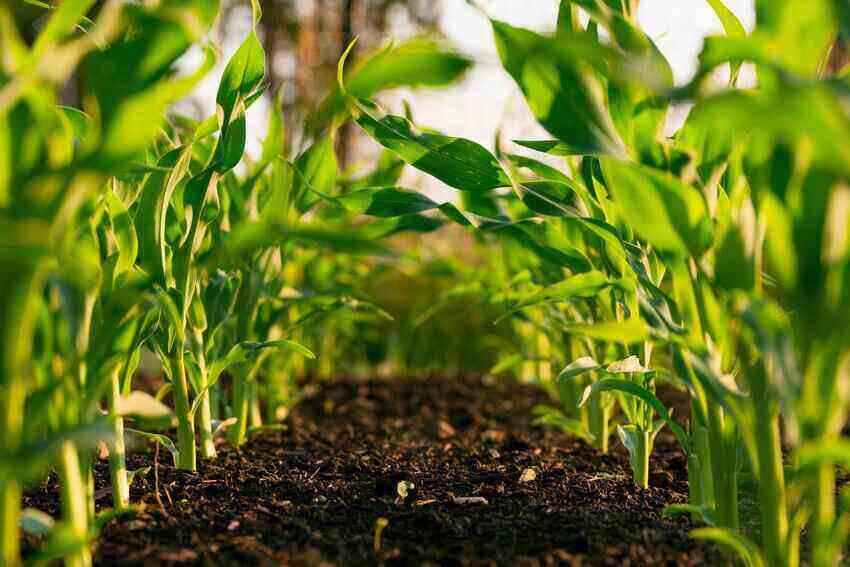No one knows the importance of fertilizer more than a gardener. Moreover, if you have any acid-lover plants then a regular fertilizer is a must. However, among so many different types of fertilizer citrus is one of the most common ones.
But citrus fertilizer is mostly used on citrus trees. Now the question is can I use citrus fertilizer on other plants?
The straight answer is that it’s possible to use citrus fertilizer on other plants. However, it must be applied according to the package’s recommendations. You can apply citrus fertilizer on other trees only if absolutely necessary. Caution is advised when applying it to seedlings or young plants.
So, to know more about the details regarding citrus fertilizer walk with us through the article.
What is Citrus Fertilizer?
Citrus fertilizer is specifically used in a citrus tree containing magnesium, iron, potassium, zinc, and boron. As these trees are already enriched with citrus the fertilizer will helps in balancing out micronutrients from the heavy nitrogen and potassium.
Can I Use Citrus Fertilizer On Other Plants –Explained In-Depth!

Nevertheless, citrus fertilizer can be used on other plants as well. When fertilizing other plants with citrus fertilizer, it’s important to keep in mind that the plants’ nitrogen requirements are lower.
In this case, it’s good to use almost half of the prescribed dosage of citrus fertilizer. Also, double the appropriate quantities of potash, potassium, and phosphorus. Furthermore, you have to keep in mind that if you already applied fertilizer to your plant then don’t put soil immediately (also, be aware of the green fertilizer balls you may find in the garden).
Many plants are vulnerable to over-watering therefore be sure you make proper drainage before adding water after using dry fertilizer or lime juice to avoid damaging several petioles.
What Are The Effects of Citrus Fertilizer on Plants?
Citrus fertilizer has a high level of potassium, which is essential for plant development, therefore it’ll benefit other plants. Nitrogen and phosphorus are also included in citrus fertilizer, which aids in foliage growth and root development respectively.
Enhancing the flavor of vegetables and fruits is another benefit that may be gained by using citrus fertilizer. Citrus fertilizer may help other plants grow healthier and produce more when applied to them.
Advantages of Using Citrus Fertilizer on Any Plant
The use of citrus fertilizer on plants has been shown to result in a variety of positive changes, including enhanced growth, higher yields, and more vibrant colors.
Additionally, it may assist in the prevention of diseases and harmful pests in plant life. Additionally, citrus fertilizer has the ability to increase the flavor of a wide variety of fruits and vegetables.
The peel and pulp of citrus fruits are used to make citrus fertilizer. It has a high concentration of phosphorus, nitrogen, and potassium, which are vital elements for the development of plants.
The leaves of plants and the soil itself are both viable application sites for citrus fertilizer. When applying fertilizer, it’s important to ensure that you do it in accordance with the instructions provided on the box; otherwise, you risk causing harm to the plants.
Lastly, the use of citrus fertilizer is a very effective method for enhancing the overall health and beauty of plants. In addition to this, it has the potential to enhance the flavor of fruits and vegetables while also helping to raise yields.
Negative Side Effects of Applying Too Much Citrus Fertilizer on Plants
Plants develop healthily and plentifully after applying lime, high amounts of potassium, and fertilizer with phosphorous and nitrogen.
A downside to this approach is that this needs a regular application to acquire the optimal outputs. Also, there are several other drawbacks that you should consider while using citrus-type fertilizers on plants.
Whenever you apply too much fertilizer, the lawn could turn yellow due to its over-acidic nature which may affect adversely plant life and even might be a reason for death.
Over-saturating your lawn with acids may damage neighboring plants and cause scorch to burn. In addition to that moss and algae may form that could be unattractive to the yard and your whole house as well.
It’s always advisable to follow the manufacturer’s guidelines when using any fertilizer on plants to escape such unwanted issues.
How to Detect Whether A Plant Is in Need of Citrus Fertilizer or Not?
After knowing the good and bad sides of using citrus the first thing that’ll come to your mind how to know whether your plants need this fertilizer or not. Well, don’t worry we’ll cover this topic here too.
Examining the leaves of a plant will tell you whether or not it needs fertilizer that contains citrus. Plants that need citrus fertilizer may be noticeably broader or more yellow than normal. Additionally, the plant’s leaves may have brown stains or places that have been scorched.
The next step is to determine, according to where they’re in their life cycle, whether or not it’s the appropriate time to fertilize them. A plant’s embryonic development stage and its blooming and fruiting phases are when it gets most of its nutrition from soil and water respectively.
So it’s important not to overfeed your plants with fertilizer solutions since this may lead to root issues such as chlorosis, and an iron shortage that causes leaves to become wilted and red in color.
However, if you’re unclear as to whether or not your plant needs citrus fertilizer, seek the assistance of a specialist at a garden store or nursery. As a result, they may be able to point you in the direction of the greatest sort of fertilizer for your plants.
How To Use Citrus Fertilizer in Plants?
First, apply a 3-inch layer of organic matter to the soil around the citrus trees. This might be well-rotted manure, compost, or hummus. Over the organic matter, apply a well-balanced fertilizer and incorporate it into the soil.
Add an organic mulch layer (like the ones for strawberries) of 1 inch to help retain moisture and control weeds. A little goes a long way with nitrogen fertilizers.
Moreover, overdoing it’ll result in an abundance of foliage at the price of ripe, juicy fruits. Each plant should be fertilized along its drip line. After fertilizing, be sure to give the area a good rinse. In the spring, apply fertilizer again.
Regular fertilization of citrus trees is necessary to ensure maximum development and fruit output. Most citrus trees may be fed once a month throughout the growing season.
However, if the plants are actively developing and bearing fruit, you may need to increase the frequency to every two weeks. A fertilizer that includes nitrogen, phosphate, and potassium is the best option for a complete fertilizer.
Foliage growth will be promoted at the cost of fruit output if heavy nitrogen fertilizers are used. Make sure that the fertilizer is applied to the drip line of each plant, and not the trunk or leaves.
After fertilizing, water thoroughly to ensure that the nutrients are equally distributed throughout the plant’s root system.
FAQs on Using Citrus Fertilizers on Plants
Can you use the same citrus fertilizer on all plants?
Use a different fertilizer on each plant. The nitrogen, potassium, and phosphorus ratios in fertilizers are particular to the plants they are designed for. Fertilizing your plants incorrectly might cause them to die or do nothing at all.
When using fertilizer, it is critical to read the label and follow the instructions. If you overfertilize, you’re doing more damage than good.
It’s important to know the specific ratios of nitrogen, potassium, and phosphorus that each plant needs to thrive. Reading and following the fertilizer label’s instructions is essential. It’s just as detrimental to over-fertilize as it is to not fertilize at all.
Is citrus fertilizer safe to apply to palm trees?
No, it’s not recommended to use citrus fertilizer on palm trees. Palms trees require a neutral pH fertilizer, but citrus fertilizers are acidic. The high concentration of citrus fertilizer can harm palm trees. So, you should use the fertilizers that are formulated for palm trees.
Can I use citrus fertilizer on figs?
For fig trees, you may apply citrus fertilizer. Fig plants require lots of potassium and nitrogen, thus citrus fertilizer is ideal here. In the summer and spring, give your fig tree a monthly feeding of citrus fertilizer.
Be sure fertilizer isn’t getting in contact with the tree’s trunk and apply it along the tree’s drip line. The fertilizer should be thoroughly soaked in. The foliage and roots of the fig plants might also be damaged if you over-fertilize them.
Is citrus fertilizer safe to use on azaleas?
No, it’s not a good idea to use citrus fertilizer on azaleas. The acidic citrus fertilizer can harm your azaleas trees.
How soon does citrus fertilizer take effect?
Fertilizer that releases nitrogen slowly, also known as controlled-release or insoluble fertilizer, is slowly broken down by microorganisms into usable nitrogen. Three to ten weeks are needed for slow-release nitrogen to show results on your grass.
What is the best method for fertilizing citrus fertilizer in the soil?
Fertilize the soil by incorporating it into the mix. Prior to planting each crop, spread the fertilizer over the garden area and disk or rake it in. Alternatively, you may apply the fertilizer to the soil before plowing or spading in the spring or autumn.
So, Can I Use Citrus Fertilizer On Other Plants?
Can I use citrus fertilizer on other plants? Yes, indeed. But before that, you should know how and when to apply citrus fertilizer to other plants.
Hopefully from the article, you got to know the answer and other information regarding this topic. Just be careful about putting the fertilizer on other plants as it might cause harm to plants.

I’m Shofi, a passionate gardener and blogger. I have 10+ years of experience in gardening and hold certifications in horticulture and garden design. I share my knowledge and skills through my garden blog to inspire and educate others on the joys of gardening. I try to provide valuable information and create a community for gardeners of all levels to connect and learn. My ultimate goal is to inspire others to start their own gardens and connect with nature.
